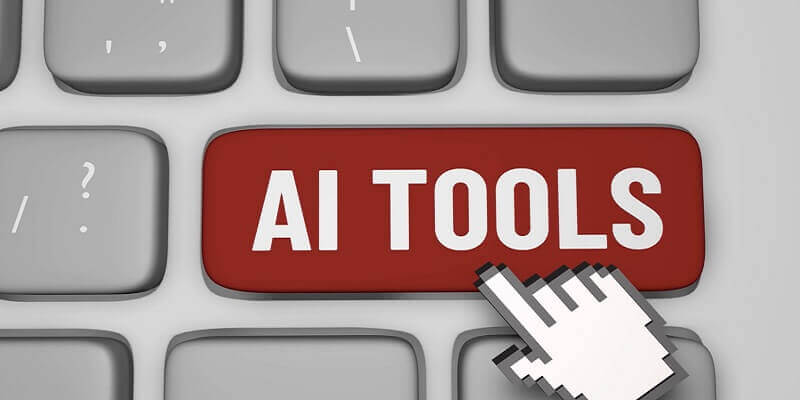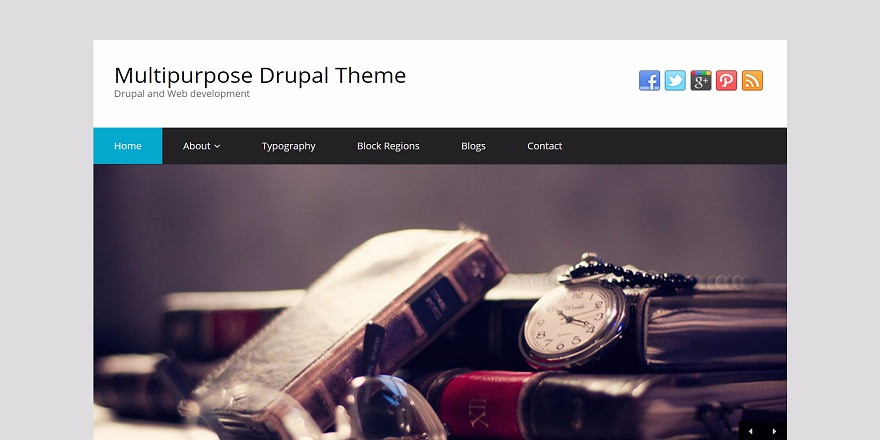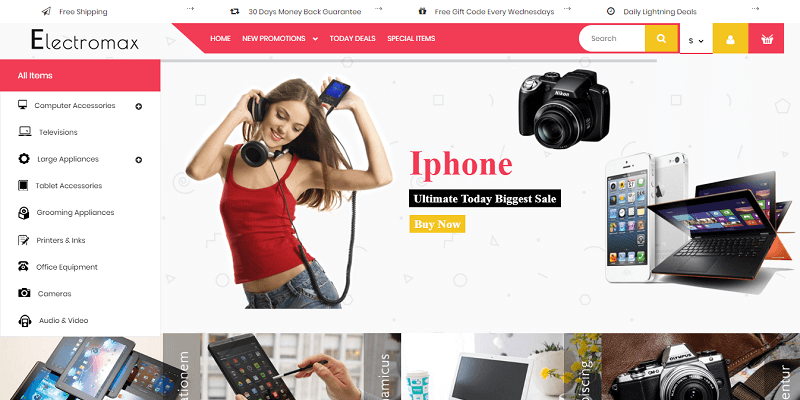Tired of spending hours on frustrating website design platforms? Say hello to AI tools for website designing – your little helpers that save you time and effort. They won’t replace your artistic touch; instead, they streamline your workflow, leaving more room for creativity. Embrace these fantastic tools in 2024, and check out the 7 best AI tools for web designers now!
List of the Best AI Tools for Web Designers:
1. Colormind
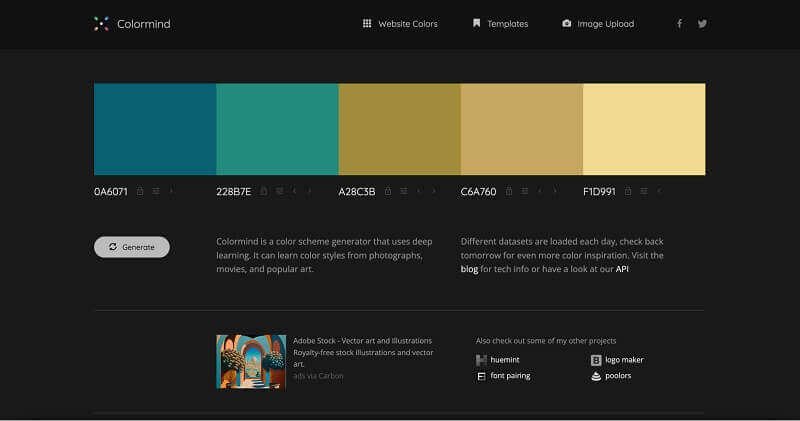
Colormind‘s sophisticated algorithms and machine learning empower designers to effortlessly generate captivating color palettes that resonate with their target audiences. Its intuitive interface and seamless integration with popular design software streamline the creative process; saving valuable time for designers at all skill levels. With the ability to analyze existing websites and design mockups, Colormind stands out from other tools, revitalizing outdated color schemes and optimizing accessibility, leading to an enhanced user experience. By harnessing the power of AI, Colormind keeps designers at the cutting edge of design trends, infusing websites with a sense of innovation and freshness.
Colormind’s impact extends beyond color generation, making it a valuable asset for collaborative design projects in 2023. With cloud-based storage and sharing options, Colormind promotes seamless teamwork among designers and stakeholders, facilitating real-time feedback and and also effective communication. This collaborative approach ensures alignment with the design vision, resulting in cohesive and well-executed projects. Moreover, Colormind’s emphasis on accessibility supports the growing focus on inclusive web design, recommending color palettes that comply with web accessibility standards, enabling designers to create websites that cater to diverse audiences with equal access to information and services.
2. Khroma
What sets Khroma apart from its competitors, including Colormind, is its emphasis on individualized color palettes tailored to the designer’s preferences and style. By utilizing advanced machine learning algorithms, Khroma learns from the designer’s previous color choices and design patterns, allowing it to make highly accurate and personalized color recommendations. Designers can even input specific keywords or moods to guide Khroma’s color suggestions further, making it an intuitive and dynamic tool that truly understands and reflects their creative vision.
Beyond its personalized approach, Khroma boasts an extensive database of color combinations inspired by renowned designers, color theorists, and art movements. This rich and diverse collection serves as a wellspring of inspiration, ensuring that designers can explore new artistic directions and design trends. Whether a designer seeks to evoke a vintage aesthetic, a contemporary vibe, or a specific cultural reference, Khroma’s vast color library offers an unrivaled source of creativity.
3. Vance AI
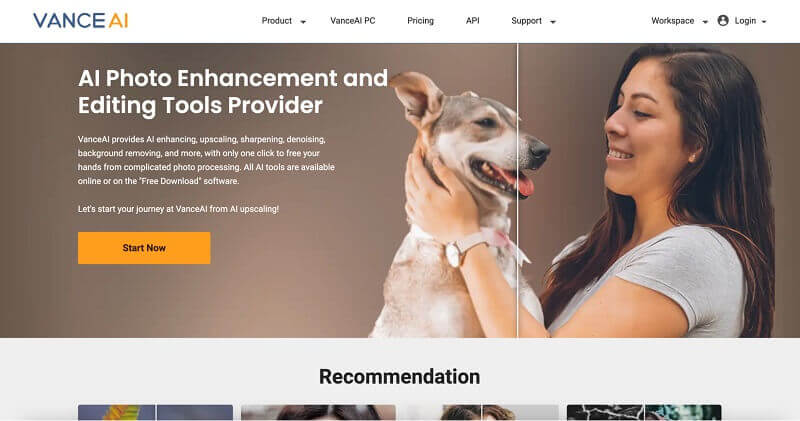
As web design continues to prioritize visually appealing and engaging content, Vance AI provides a game-changing solution by using advanced AI algorithms to enhance images with remarkable precision. From upscaling images without sacrificing quality to removing backgrounds effortlessly; Vance AI streamlines the image editing process, saving designers valuable time and also effort. Besides this, its seamless integration with design software ensures a smooth workflow; allowing designers to incorporate stunning, high-quality visuals into their web projects easily.
In addition to image enhancement, Vance AI offers a variety of cutting-edge features that cater to the needs of web designers. Its AI-powered image compression technology optimizes image files without compromising quality; contributing to faster website loading times and also improved user experience. Moreover, Vance AI’s versatile image conversion tools allow designers to effortlessly transform images into different formats; making it a valuable asset for cross-platform compatibility.
4. Stable Diffusion
Unlike traditional image generation tools, Stable Diffusion stands out by generating detailed images based on text prompts that describe specific elements to include or omit from the output. This innovative approach offers designers a new level of creative control; enabling them to craft highly customized visuals that align precisely with their design vision. Whether it’s creating unique illustrations, icons, or even entire web page mockups; Stable Diffusion’s ability to translate textual descriptions into visually stunning images opens up a realm of endless design opportunities.
Moreover, Stable Diffusion’s capabilities extend beyond mere image generation. The tool’s remarkable versatility allows it to re-draw existing images, incorporating new elements described by the user. This means that designers can take their existing artwork, illustrations, or logos and effortlessly expand upon them; tailoring the visuals to meet specific project requirements. This innovative feature streamlines the design process; making it easier for designers to iterate and also experiment with different design ideas.
5. Dall-E 2

With Dall-E 2, web designers can bring their creative visions to life effortlessly, transforming written ideas into visually stunning graphics, illustrations, and artwork. The tool’s advanced deep learning algorithms understand the nuances of design concepts described in text prompts; resulting in a vast array of novel and captivating visuals that cater to the specific needs of each project. This seamless integration of artificial intelligence with the design workflow not only saves time but also sparks new waves of creativity; allowing designers to explore uncharted territories of visual expression.
Additionally, Dall-E 2’s versatility goes beyond image generation; making it a crucial asset for web designers. By harnessing the tool’s ability to understand textual descriptions, designers can efficiently create custom icons, logos, and graphics; tailored precisely to the brand identity and website aesthetics. This personalized approach fosters stronger brand recognition and user engagement; making Dall-E 2 a powerful tool for crafting unique visual experiences that resonate with audiences.
6. Midjourney
Midjourney leverages the power of AI to analyze and enhance website usability, ensuring that designers create intuitive and engaging user interfaces. Midjourney’s AI-driven insights provide invaluable data on user behavior; allowing designers to make data-backed decisions for improving navigation, layout, and also overall user flow. By optimizing the user experience through AI; web designers can create websites that not only captivate visitors with visually stunning aesthetics but also offer seamless and satisfying interactions; ultimately increasing user satisfaction and retention.
Another standout feature of Midjourney is its AI-powered design assistance; which empowers designers to enhance their creative process and also boost productivity. The platform’s AI algorithms can intelligently generate design elements, such as icons, illustrations, and graphics, based on user input and design specifications. This not only accelerates the design workflow but also inspires designers with new ideas and perspectives; fostering a harmonious collaboration between human creativity and artificial intelligence.
7. Designs AI
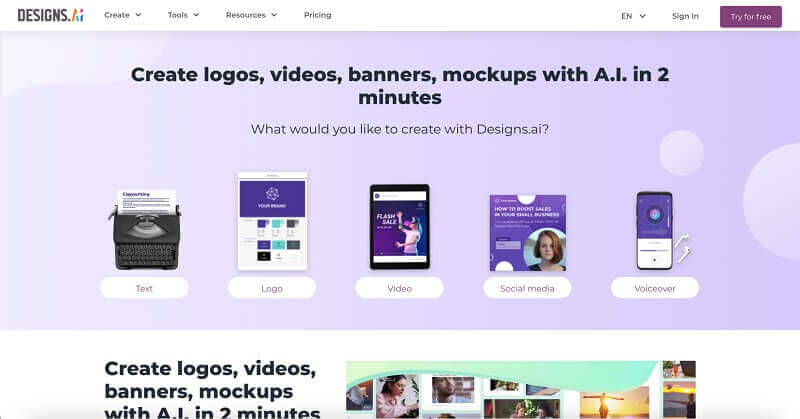
Designs AI is an all-in-one platform that offers designers a wealth of tools to streamline their creative process and elevate the quality of their web designs. From logo creation and branding materials to website mockups and social media graphics, Designs AI’s intelligent algorithms generate visually stunning and also professional-quality designs with remarkable ease. Besides this, its user-friendly interface and seamless integration with popular design software make it accessible to designers of all skill levels; allowing them to produce captivating visuals that align perfectly with their clients’ or brands’ identities.
Moreover, Designs AI’s unique ability to adapt to the designer’s style and preferences sets it apart from other AI tools. As designers interact with the platform and also provide feedback; the AI algorithms continuously learn and refine their recommendations; tailoring the design output to match the designer’s creative vision. This personalized touch fosters a strong sense of collaboration between the designer and the AI; ultimately enhancing the overall design process and resulting in outputs that feel distinctly human and unique.

